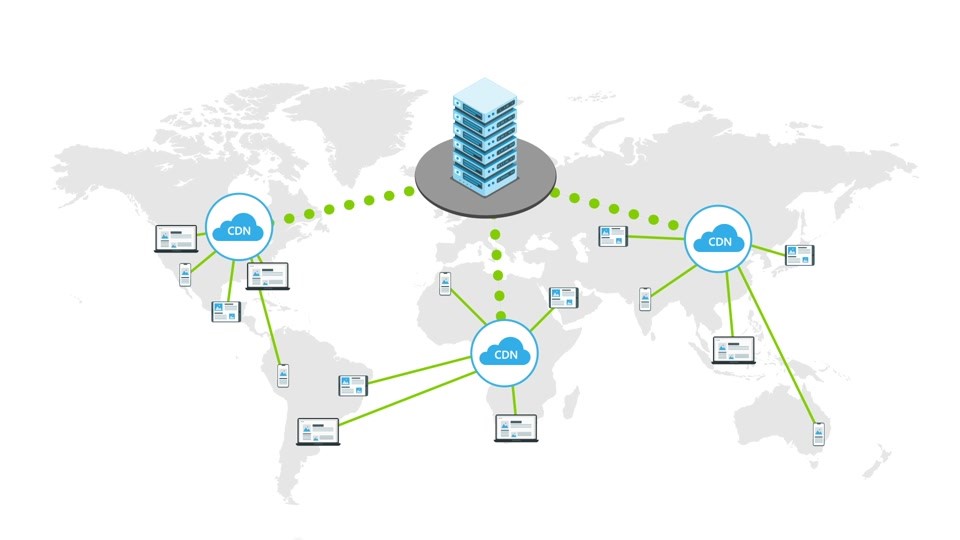
Have you ever clicked on a link and been amazed at how quickly a page loads-or how painfully slowly it loads? Congratulations, you already know the magic and misery of web performance! Behind many of those speedy, smooth experiences is something called a CDN, or Content Delivery Network.
A CDN runs quietly in the background, says Fastly, but it plays a vital part in how we browse, shop, stream and connect online. Let’s take a closer look at what CDNs are, how they work, and why they matter not just for speed, but for security too.
What exactly is a CDN?
At the most basic level, a CDN is essentially a network of “mini-internet warehouses” scattered around the globe, placed in strategic positions. Instead of your browser having to download a website’s content from a centralized, perhaps halfway around the world, server, a CDN deploys copies of this content throughout multiple locations, called edge servers. The server closest to your own gets the site to you, when you request the site.
Think of it like ordering pizza. If the only pizza shop was across the country, you’d be waiting a long time and your dinner would be cold. But if there’s a branch just down the street, it’s piping hot and in your hands within minutes. That’s what a CDN does—delivers content fast, without the long wait.
Why Speed Matters More Than Ever
Speed is not merely a convenience—it’s keeping users interested. Research has demonstrated that if a page takes longer than several seconds to load, most users will abandon the site. In this world, where the competition is but a click away, this is a catastrophe.
CDNs address this challenge by shortening the distance the user has to travel to get to the server. Whether you’re watching a movie, navigating a retail site, or browsing an image-intensive news page, the CDN makes the information travel a significantly shorter distance. That equates to fewer delays, fewer interruptions, and happier users.
Beyond Speed: The Security Perspective
Although CDNs are well-known for speeding up sites, they’ve also become a cornerstone of web security. Cyberattacks, including Distributed Denial of Service (DDoS) attacks, function by bombarding a site’s server with traffic until it breaks down. CDNs function as gigantic shock absorbers, distributing this traffic across their worldwide network and weeding out the malicious stuff before it even gets to the main server.
Most CDNs today include built-in features for SSL encryption (read more), bot detection, and even web application firewalls. In other words, they not only get your site up quickly but also serve as sentinels, keeping out the undesirables while admitting legitimate visitors.
The Invisible Helpers of the Web
One of the reasons CDNs don’t get much spotlight is because they work quietly in the background. You don’t need to “use” them like you would a search engine or social site program. Your sites and your apps include CDNs, so you’re getting the benefits of them when you visit a site with a CDN, but you don’t realize it.
If you’ve ever streamed a Netflix show without buffering, viewed an online live sports game with low latency, or shopped a store’s Black Friday sales without the website freezing, you likely owe it to a CDN.
Are CDNs Only for Big Companies?
It’s not hard to believe CDNs would be reserved for popular sites the size of Amazon or YouTube, but those days are behind us. Even small companies and individual bloggers now have access to CDNs with low (often even zero) costs attached to them. For sites with a global clientele, CDNs can mean the difference between appearing professional or appearing slow, clunky, and behind the times.
The Future of CDNs
Just like with other internet technologies, CDNs aren’t sitting idly by. They’re adapting to do more than serve up static content. Current CDNs can optimize images on the fly, store dynamic content in the cache, even execute the code on the edge—i.e., near the end-user—to create faster, more interactive experiences.
CDNs are even getting better at recognizing suspicious behavior and shutting it down automatically. With the internet growing more sophisticated and end-user expectation ever on the rise, CDNs will become even more indispensable. We will further get to see them even more intertwined with cloud services, edge computing, and optimizations based on artificial intelligence.
Wrapping It Up
A CDN might not be the flashiest part of the web, but it’s one of the most important. It shortens the distance between your content and your audience, keeps your site running smoothly under heavy traffic, and shields it from many common online threats.
Whether you’re a casual browser or running a high-traffic e-commerce store, chances are you’re already benefiting from one every single day. Next time a page comes up right away or a stream lives up to its name without skipping a beat, keep in mind—somewhere out there, a CDN is humbly making it so.






















